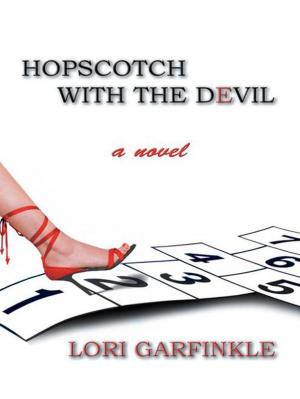Washington City Citadel
A Civil War Romance
Nonfiction, History, Americas, United States, Civil War Period (1850-1877)| Author: | Nikki Stoddard Schofield | ISBN: | 9781524687670 |
| Publisher: | AuthorHouse | Publication: | April 27, 2017 |
| Imprint: | AuthorHouse | Language: | English |
| Author: | Nikki Stoddard Schofield |
| ISBN: | 9781524687670 |
| Publisher: | AuthorHouse |
| Publication: | April 27, 2017 |
| Imprint: | AuthorHouse |
| Language: | English |
Memories of my grandfather, Frederick John Burns (18751956), a homeopathic doctor who graduated from Rush Medical School in Chicago, and his daughter who was my mother, Lois Burns Stoddard (19162003), a graduate of the Henry Ford Nurses Training School in Detroit, stirred my interest in the history of medicine. I have read books on the subject for years and was impressed by my visit to the Civil War Museum of Medicine in Hagerstown, Maryland. In June 2015, I began volunteering as a guide at the Indiana Medical History Museum, located in the old Pathology Building on the grounds of Central State Hospital. This facility, originally called the Indiana Hospital (never asylum) for the Insane, is now gone, but the science laboratory built in 1896 still stands. Miss Dorothea Dix spoke to Indiana legislators in 1844 to convince them to build an insane asylum, which they did. The building intended for a hundred mentally ill people was constructed as two connected log cabins in downtown Indianapolis, but it is doubtful that any patients ever used the structure. Instead, the Indiana Hospital for the Insane was built on one hundred sixty acres just three miles west of downtown Indianapolis. The idea about the two soldiers who, during the Peninsula Campaign, suffered from malaria that resulted in their developing a high fever, and the fever killing the syphilis spirochetes, came from my work at the Indiana Medical History Museum. In that building, the doctors studied the malarial treatment for syphilis. Dr. Walter Bruetsch (18961977) came from Heidelberg, Germany, to Indianapolis in 1925 to further his research on this groundbreaking cure for syphilis. However, only about thirty percent of the patients with syphilis at Central State Hospital were cured. When Dr. Bruetsch also experimented with penicillin, the German doctor concluded that drug to be far superior, and the malarial treatment ended. The books on the history of insanity, which I used as research, are listed at the end. The possibility of people being incarcerated against their will in an insane asylum was not uncommon in the nineteenth century. In July 2016, I traveled to Alexandria, Virginia, and Washington, DC, to do research for this book. I was especially interested in historic buildings in order to describe the area. I walked the streets of Alexandria in ninety-degree heat. At the Book Bank Used Books on King Street, I talked to Ms. Becky Squires, who lives on Queen Street and who was very helpful in providing historic information. In Washington, I observed the contrast of the wide streets, so different from Old Town Alexandria. The trip was beneficial in helping me visualize the two locations at the time of the Civil War. In many languages, story and history are the same word. Therefore, to create a fictional story by using historical characters and events seems a reasonable endeavor. According to his son, John Steinbeck said that the purpose of writing is to reconnect people to their own humanity. My purpose for writing is to connect people to our Civil War and thereby learn how we have become who we are as Americans because of what happened during that four-year period.
Memories of my grandfather, Frederick John Burns (18751956), a homeopathic doctor who graduated from Rush Medical School in Chicago, and his daughter who was my mother, Lois Burns Stoddard (19162003), a graduate of the Henry Ford Nurses Training School in Detroit, stirred my interest in the history of medicine. I have read books on the subject for years and was impressed by my visit to the Civil War Museum of Medicine in Hagerstown, Maryland. In June 2015, I began volunteering as a guide at the Indiana Medical History Museum, located in the old Pathology Building on the grounds of Central State Hospital. This facility, originally called the Indiana Hospital (never asylum) for the Insane, is now gone, but the science laboratory built in 1896 still stands. Miss Dorothea Dix spoke to Indiana legislators in 1844 to convince them to build an insane asylum, which they did. The building intended for a hundred mentally ill people was constructed as two connected log cabins in downtown Indianapolis, but it is doubtful that any patients ever used the structure. Instead, the Indiana Hospital for the Insane was built on one hundred sixty acres just three miles west of downtown Indianapolis. The idea about the two soldiers who, during the Peninsula Campaign, suffered from malaria that resulted in their developing a high fever, and the fever killing the syphilis spirochetes, came from my work at the Indiana Medical History Museum. In that building, the doctors studied the malarial treatment for syphilis. Dr. Walter Bruetsch (18961977) came from Heidelberg, Germany, to Indianapolis in 1925 to further his research on this groundbreaking cure for syphilis. However, only about thirty percent of the patients with syphilis at Central State Hospital were cured. When Dr. Bruetsch also experimented with penicillin, the German doctor concluded that drug to be far superior, and the malarial treatment ended. The books on the history of insanity, which I used as research, are listed at the end. The possibility of people being incarcerated against their will in an insane asylum was not uncommon in the nineteenth century. In July 2016, I traveled to Alexandria, Virginia, and Washington, DC, to do research for this book. I was especially interested in historic buildings in order to describe the area. I walked the streets of Alexandria in ninety-degree heat. At the Book Bank Used Books on King Street, I talked to Ms. Becky Squires, who lives on Queen Street and who was very helpful in providing historic information. In Washington, I observed the contrast of the wide streets, so different from Old Town Alexandria. The trip was beneficial in helping me visualize the two locations at the time of the Civil War. In many languages, story and history are the same word. Therefore, to create a fictional story by using historical characters and events seems a reasonable endeavor. According to his son, John Steinbeck said that the purpose of writing is to reconnect people to their own humanity. My purpose for writing is to connect people to our Civil War and thereby learn how we have become who we are as Americans because of what happened during that four-year period.















